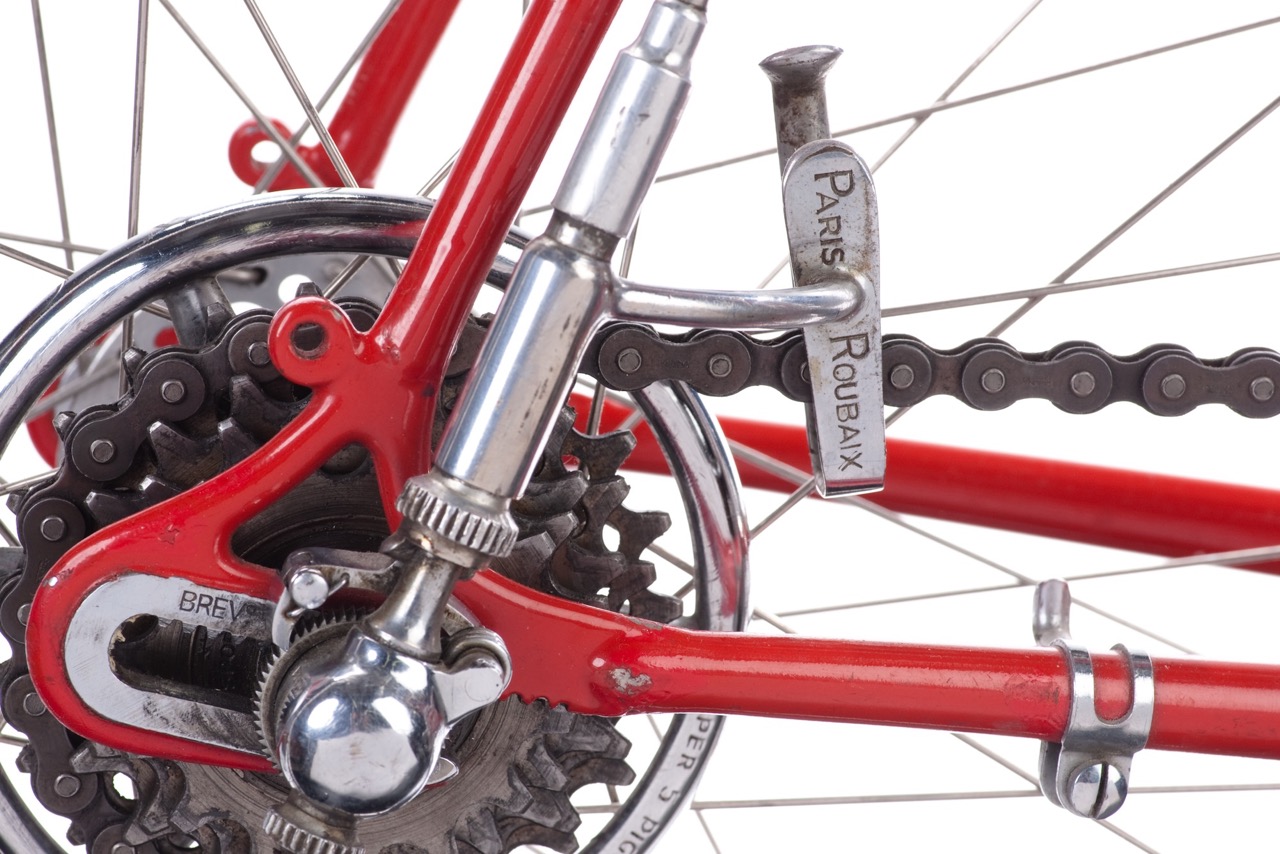
By Mike Barry
Photography by Walter Lai
Paris-Roubaix, then and now.
This year Matt Hayman won Paris-Roubaix covering the 257 km in 5h 51m at an average speed of 43.9 kph.
In 1950 Fausto Coppi won Paris-Roubaix covering the 247 km in 6h 18 m at an average speed of 39.12 kph.
There have been many changes in the course, conditions and equipment over the years but the most remarkable is in the equipment. Hayman used a bike with an aerodynamic carbon frame and fork and aero carbon deep section rims. Coppi used a steel Bianchi frame and fork with standard aluminum rims and a heavy steel crankset.
The one thing that Coppi and Hayman had in common was their choice of tires. Both used 28 mm tubulars.
The biggest difference was the gearing. Hayman had 22 gear ratios to choose from with a highest gear of 53×11. (130.1”) Coppi had 5 gears with a top gear of 48×14. (92.6”). Hayman could change gear by pressing an electric switch mounted on the handlebar. Coppi changed gear using the derailleur described below. I think that Hayman had a bit of an advantage changing gear whilst bouncing over cobbles.
In 1950 Coppi won the Paris-Roubaix using Campagnolo’s newest derailleur the “Una leva” (single lever) model which superseded the “Due leve” (two lever model) originally introduced in 1936. Following Coppi’s win the new mechanism was renamed the Paris-Roubaix model.
The new derailleur was a beautifully made piece of equipment although somewhat difficult to operate. The French had numerous derailleurs similar to those we have today, cable operated from down tube-mounted levers. The new Campagnolo mechanism was operated from a lever mounted on the seat stay.
To change gear the rider would:
a) Reach back to the seat-stay mounted lever.
b) Back pedal.
c) Turn the lever releasing the rear wheel. (The lever was in effect a extended quick release)
d) The action of releasing the wheel would engage the lever with a fork mounted over the chain enabling the rider to select the sprocket he wanted by turning the lever.
e) Once the chain was engaged on the correct sprocket the rider would stop backpedaling and turn the lever back to it’s locked position. This action would lock the wheel and release the changing fork.
f) The rider could then pedal forward again and go on his merry way.
There were no springs, as in every other derailleur before or since, to take up the length of chain required for the different size sprockets. The hub axle was splined and rolled along teeth cut into the rear drop-outs. When a sprocket was selected the axle rolled backwards or forwards on the inclined drop-outs as far as the chain would allow. The splined axle and the toothed drop-outs kept the wheel aligned between the chain stays.
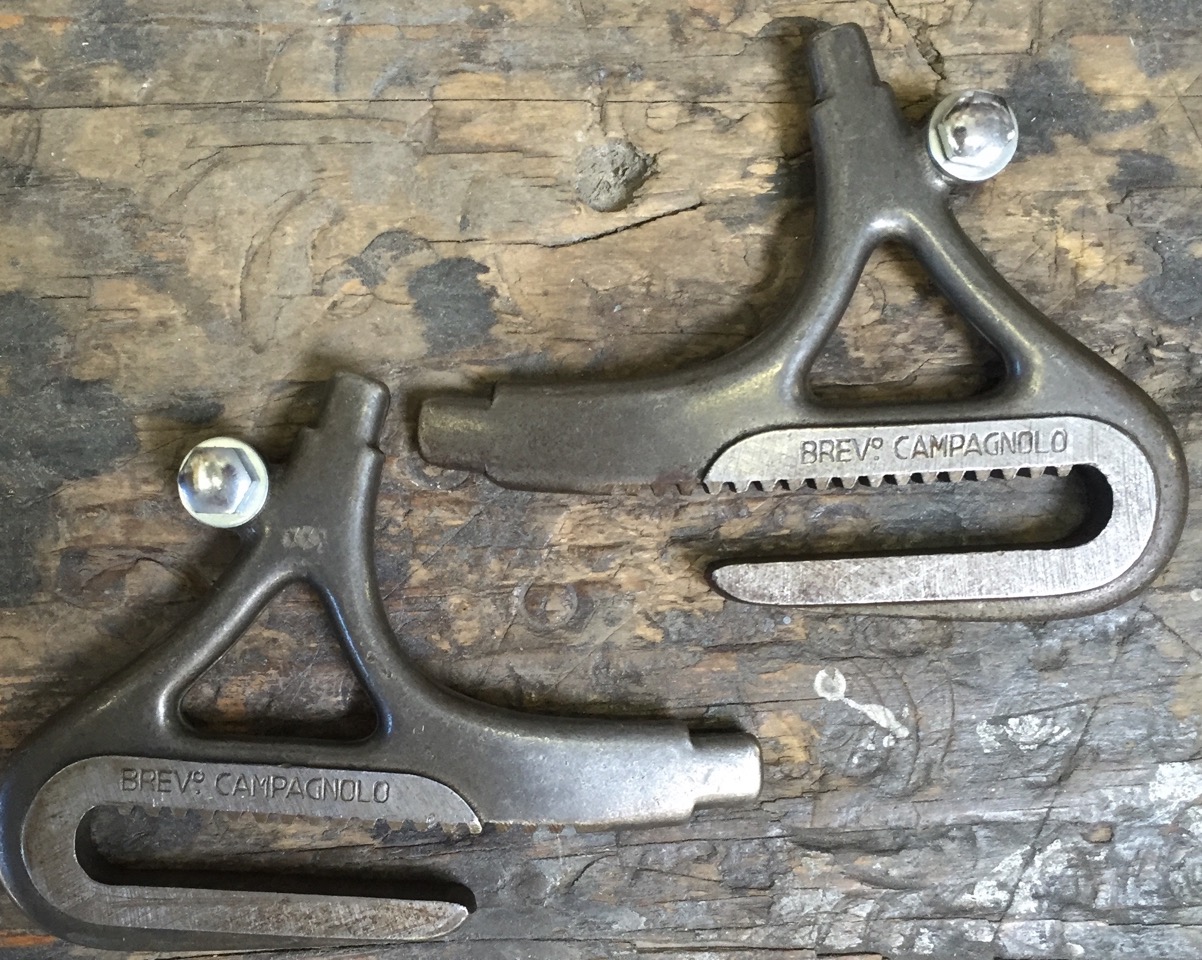
Paris-Roubaix Toothed Drop-outs
Prior to the Paris-Roubaix derailleur Campagnolo had a similar mechanism known as the Corsa or two lever, that had two seat stay mounted levers. It worked the same as the Paris-Roubaix except that one lever unlocked the wheel and the other selected the desired sprocket. When the axle rolled back to the extremity of the chain, the chain tended to be a bit tighter and not so free running as desired. The Paris-Roubaix model fixed that problem by rolling the axle forward an adjustable amount as the wheel is locked, taking the tightness off the chain.
The Paris-Roubaix and the Corsa stayed in production until 1955 indicating that there was demand for them up to four years after Campagnolo introduced their Gran Sport model. The Gran Sport started the revolution to the type of derailleur we have today.
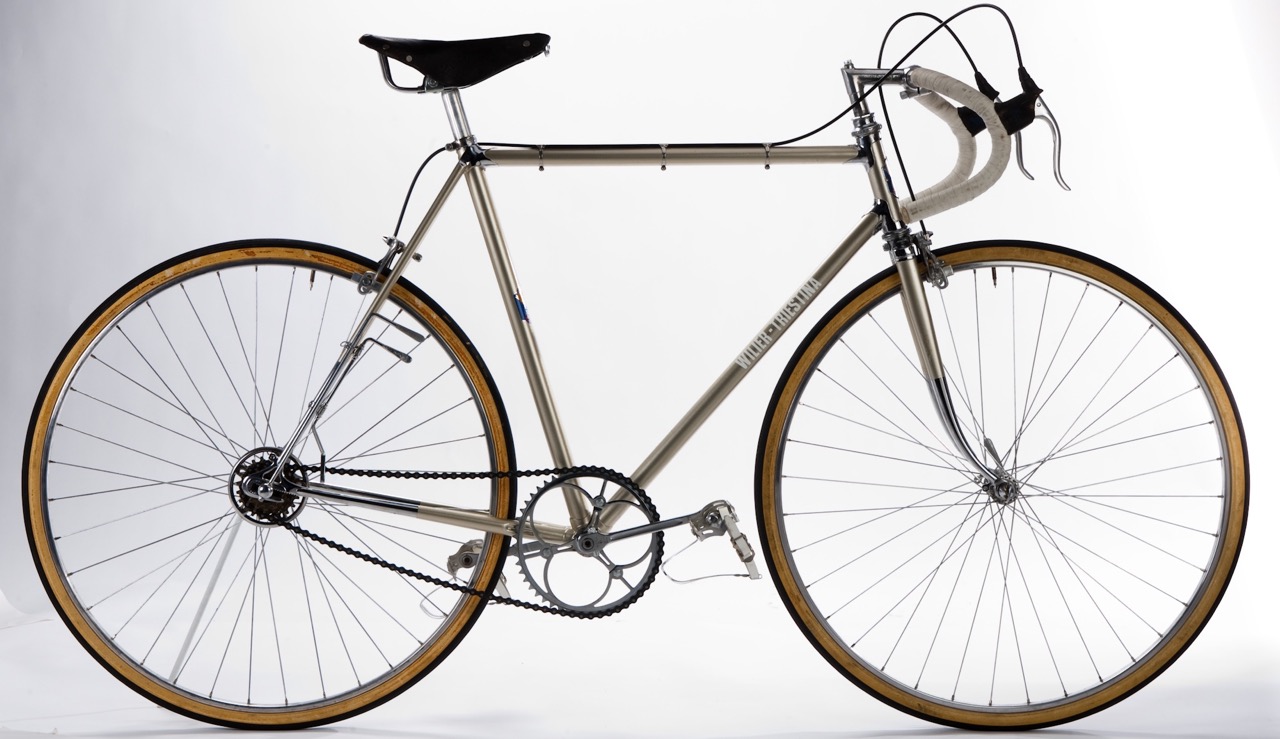
Wilier Triestina with a Cambio Corsa derailleur
I saw my first Paris-Roubaix derailleur in about 1952. A rider turned up at the bike shop that I hung around on this beautiful bike that he had just brought back from Italy. It was fitted with a Paris-Roubaix and a handlebar lever controlled Campagnolo Gran Sport front derailleur. The bike was a bright blue with polished copper mudguards. I thought that it was the finest machine that I had ever seen. I was determined to get a similar one. However I wanted a P-R equipped Bianchi similar to the one Coppi used. I managed to find a used one in 1955 that I still have today. The bike is nice to ride and with some practice it isn’t too difficult to change gear. In my racing days I used it on some training rides but only once in a race, a hill climb for which I selected the appropriate gear before the start and made no attempt to change during the event.
In 1972 I had managed to add a few Paris-Roubaix derailleurs to my collection. A friend begged me to build him a Mariposa fitted with a P-R. I had a set of the toothed drop-outs and agreed. He rode the bike for many years but found it rather difficult to handle in his latter years. He offered it back to me and I rode it in the 2005 l’Eroica, an event for vintage bikes in Tuscany. It rode very well although I could have used some lower gears. I had tried to fit a double chainwheel but the length of the drop-outs would not accommodate any more chain length than that needed to work with the 15-23 freewheel that was fitted.
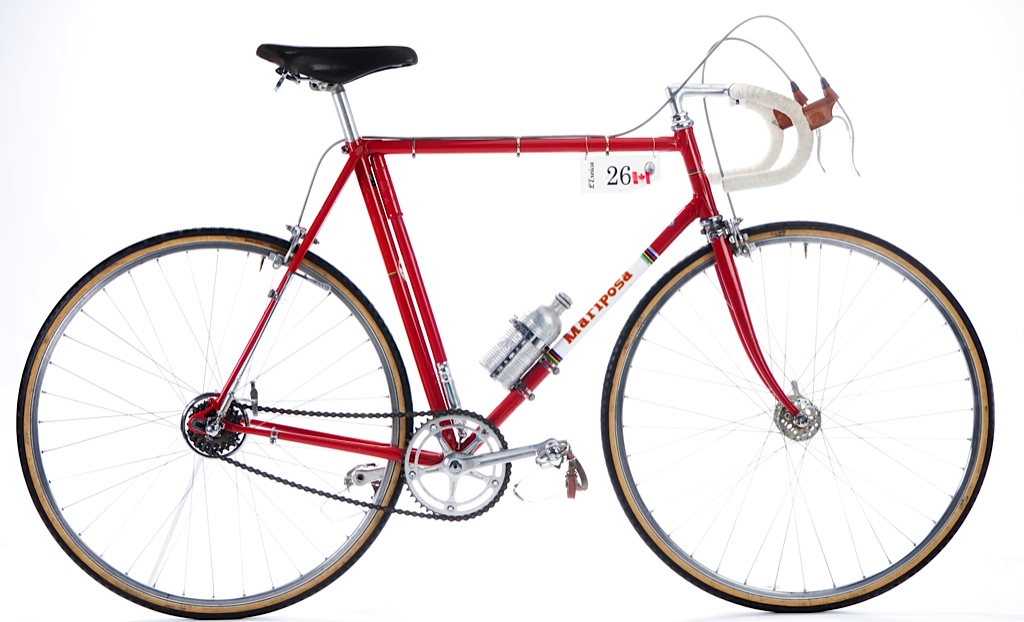
Mike Barry’s 1970s Mariposa that he rode in the 2005 Eroica with a Campagnolo Paris-Roubaix derailleur
Fitting a double chainwheel is a bit crazy anyway. It would mean pedaling backwards to change the rear derailleur and pedaling very carefully forwards when changing the front derailleur. “Very carefully” because the rear wheel would have to be unlocked to allow the chain to derail and pedaling forward anything but carefully would pull the hub out of the drop-outs.
I have seen photos of bikes set up with rod operated front derailleurs and Corsa or P-R rear derailleurs. That would be fun to operate, trying to juggle between levers front and rear.
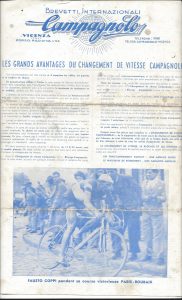

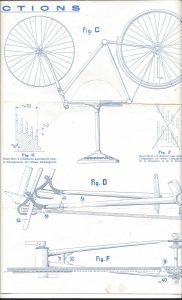
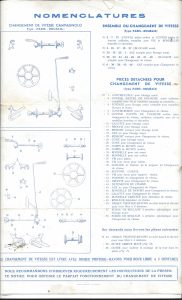
Original Campagnolo Paris-Roubaix Brochure
The Campagnolo literature of 1950 listed the following great advantages of the Paris-Roubaix derailleur:
Bike equipment has changed since 1950. No parts more so than the derailleurs. Todays are super efficient and easy to use but those old ones have a certain charm.
At Mariposa/Bicycle Specialties we have a good knowledge of vintage bikes and equipment and can restore old bikes to their original condition ready for any of the multitude of retro bike events available today or just to hang on your living room wall. For more information, contact us at info@mariposabicycles.ca


Awesome. I wish I had my own road bike with the vintage Campagnolo Paris Roubiax setup on it.